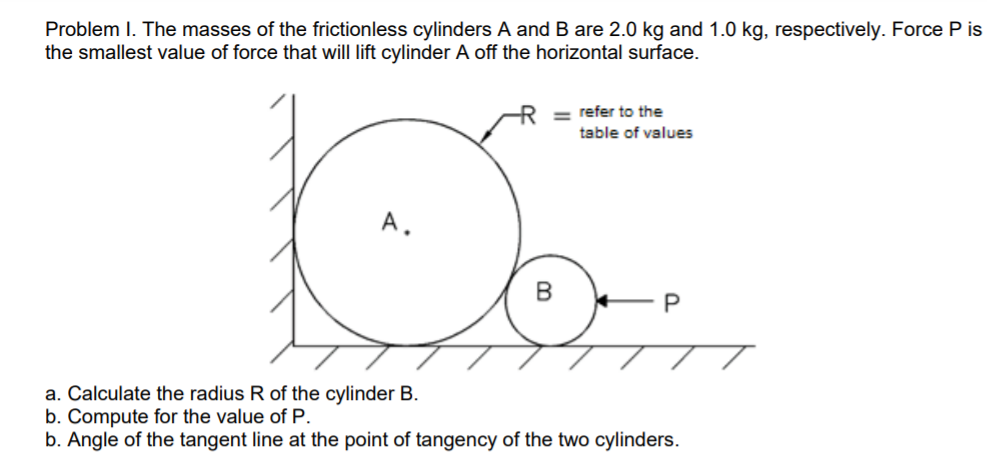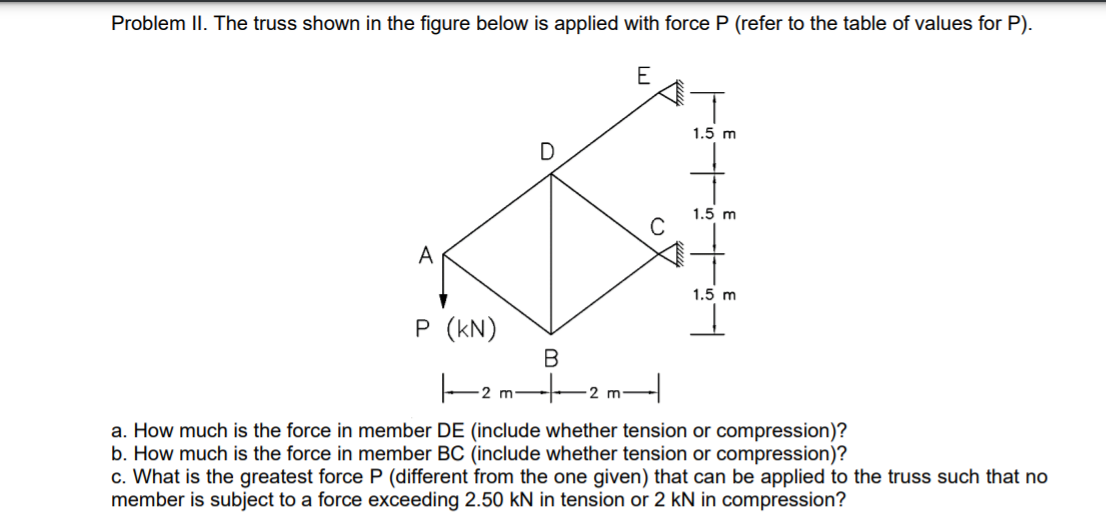Problem I. The masses of the frictionless cylinders A and B are 2.0 kg and 1.0 kg, respectively. Force P is the smallest value of force that will lift cylinder A off the horizontal surface.
Problem I. The masses of the frictionless cylinders A and B are 2.0 kg and 1.0 kg, respectively. Force P is the smallest value of force that will lift cylinder A off the horizontal surface.
International Edition---engineering Mechanics: Statics, 4th Edition
4th Edition
ISBN:9781305501607
Author:Andrew Pytel And Jaan Kiusalaas
Publisher:Andrew Pytel And Jaan Kiusalaas
Chapter7: Dry Friction
Section: Chapter Questions
Problem 7.42P: Determine the smallest force P, applied to the plunger D, that will prevent the couple C=200Nm from...
Related questions
Question
P(kN) = 91
RA (cm) = 949
please put the unit for the final answer thanks.

Transcribed Image Text:Problem I. The masses of the frictionless cylinders A and B are 2.0 kg and 1.0 kg, respectively. Force P is
the smallest value of force that will lift cylinder A off the horizontal surface.
= refer to the
table of values
A.
a. Calculate the radius R of the cylinder B.
b. Compute for the value of P.
b. Angle of the tangent line at the point of tangency of the two cylinders.

Transcribed Image Text:Problem II. The truss shown in the figure below is applied with force P (refer to the table of values for P).
E
1.5 m
1.5 m
C
A
1.5 m
P (kN)
-2 m-
2 m-
a. How much is the force in member DE (include whether tension or compression)?
b. How much is the force in member BC (include whether tension or compression)?
c. What is the greatest force P (different from the one given) that can be applied to the truss such that no
member is subject to a force exceeding 2.50 kN in tension or 2 kN in compression?
Expert Solution
This question has been solved!
Explore an expertly crafted, step-by-step solution for a thorough understanding of key concepts.
Step by step
Solved in 3 steps with 6 images

Knowledge Booster
Learn more about
Need a deep-dive on the concept behind this application? Look no further. Learn more about this topic, mechanical-engineering and related others by exploring similar questions and additional content below.Recommended textbooks for you

International Edition---engineering Mechanics: St…
Mechanical Engineering
ISBN:
9781305501607
Author:
Andrew Pytel And Jaan Kiusalaas
Publisher:
CENGAGE L

International Edition---engineering Mechanics: St…
Mechanical Engineering
ISBN:
9781305501607
Author:
Andrew Pytel And Jaan Kiusalaas
Publisher:
CENGAGE L